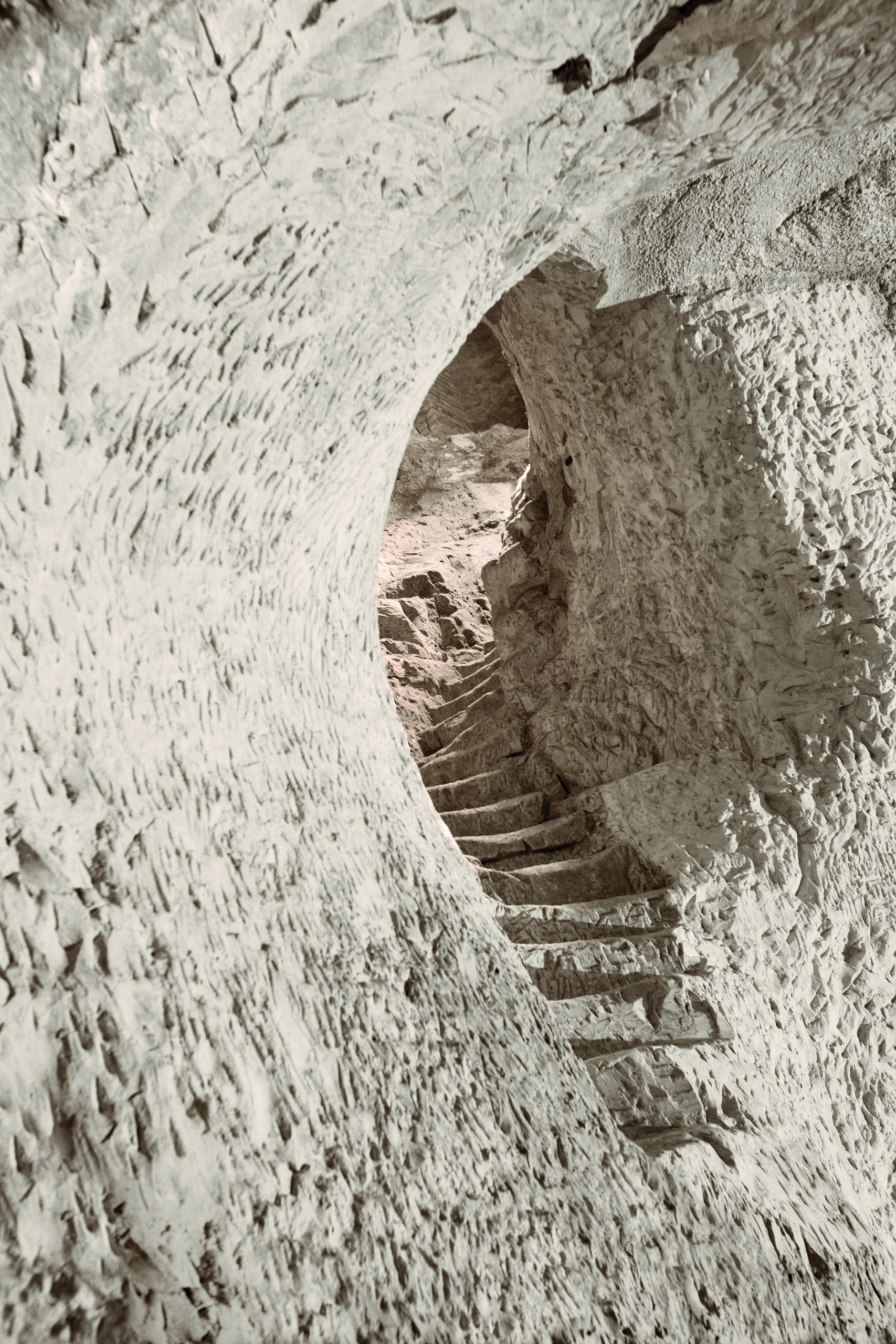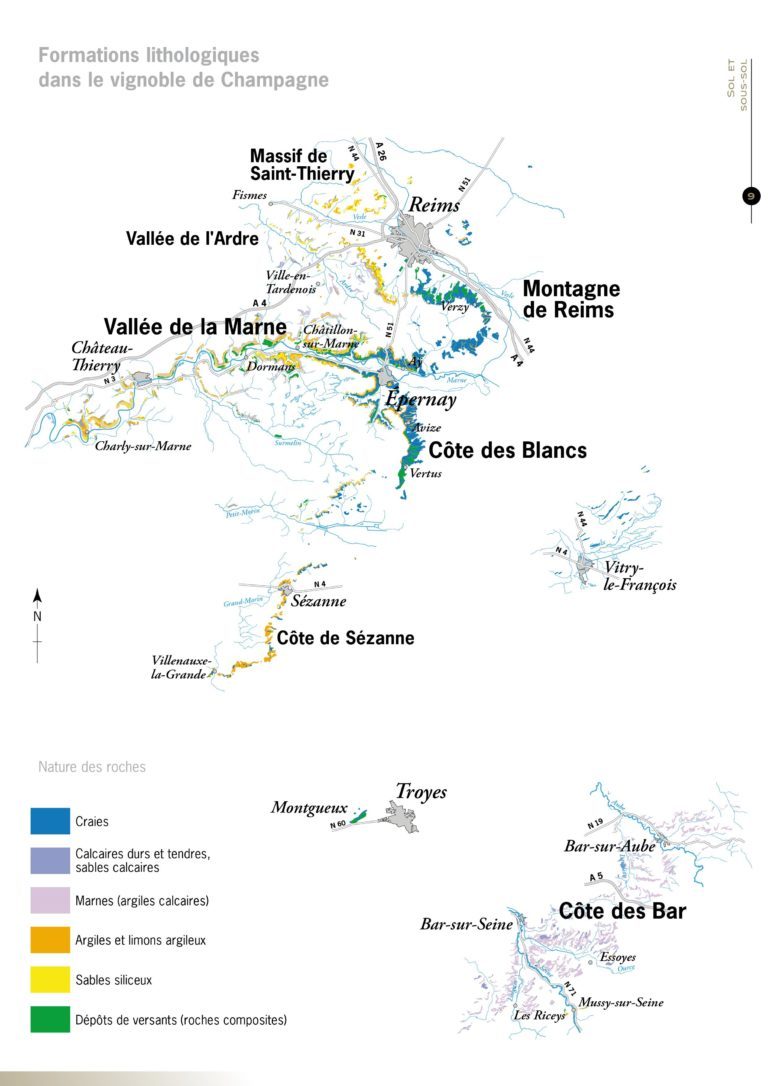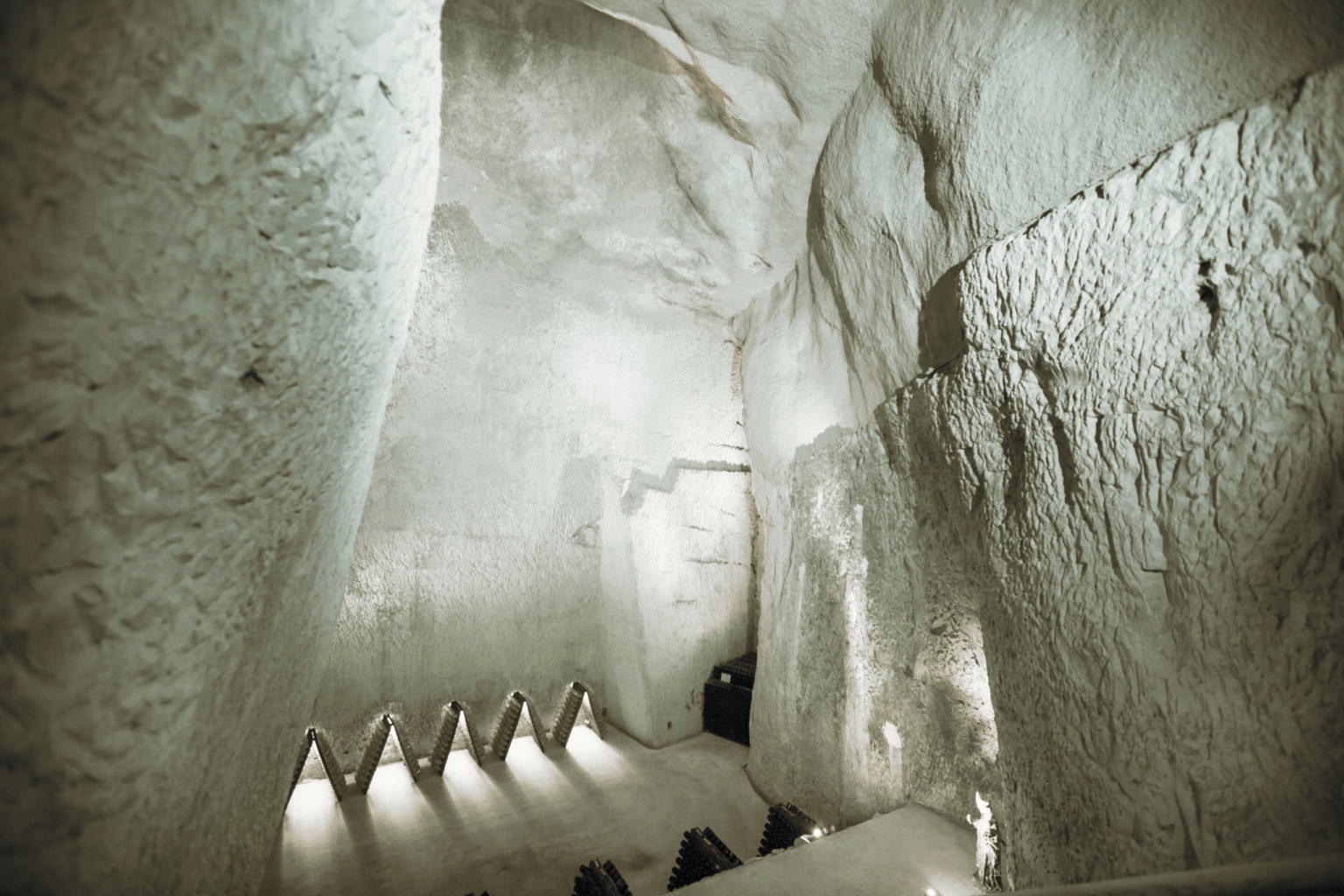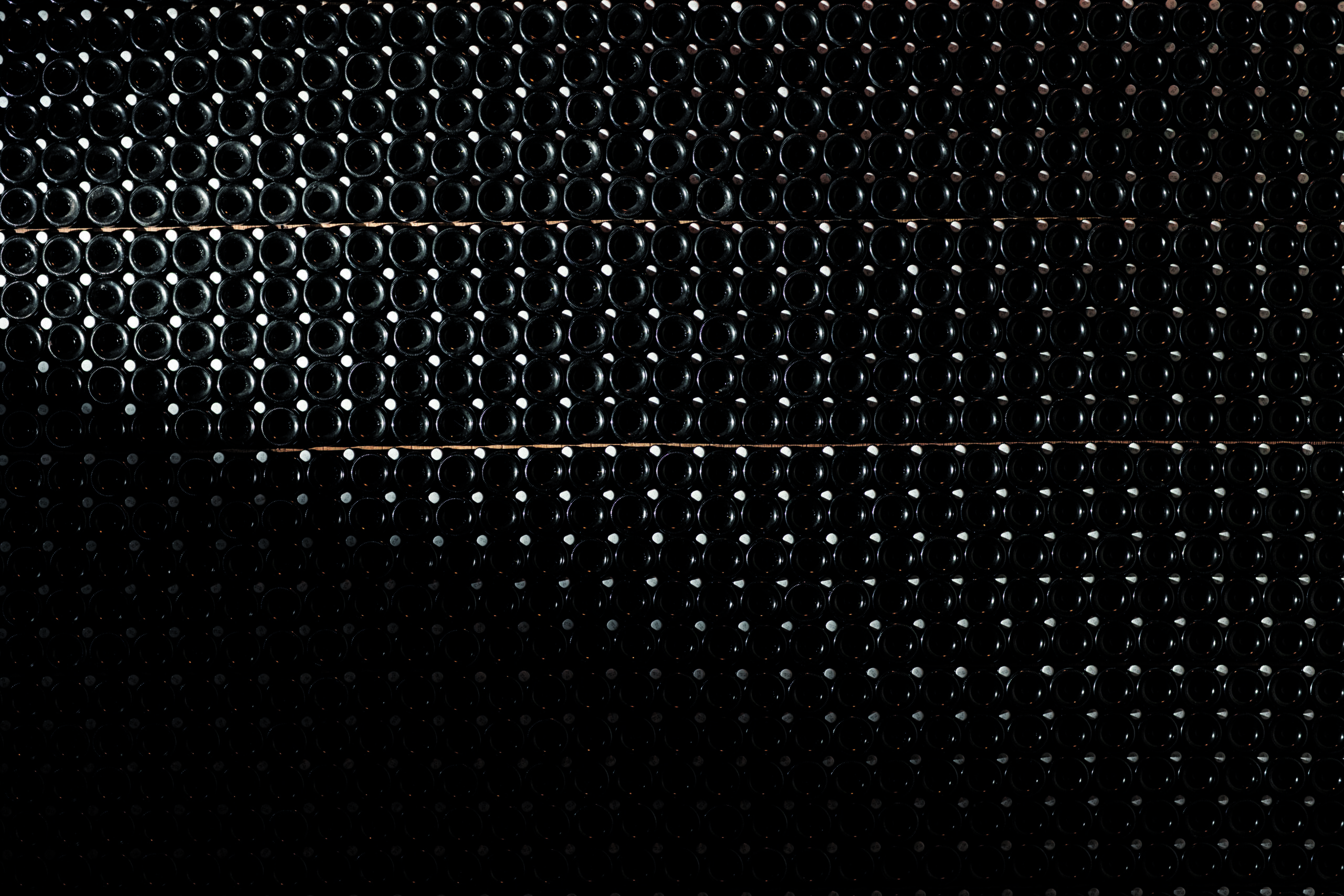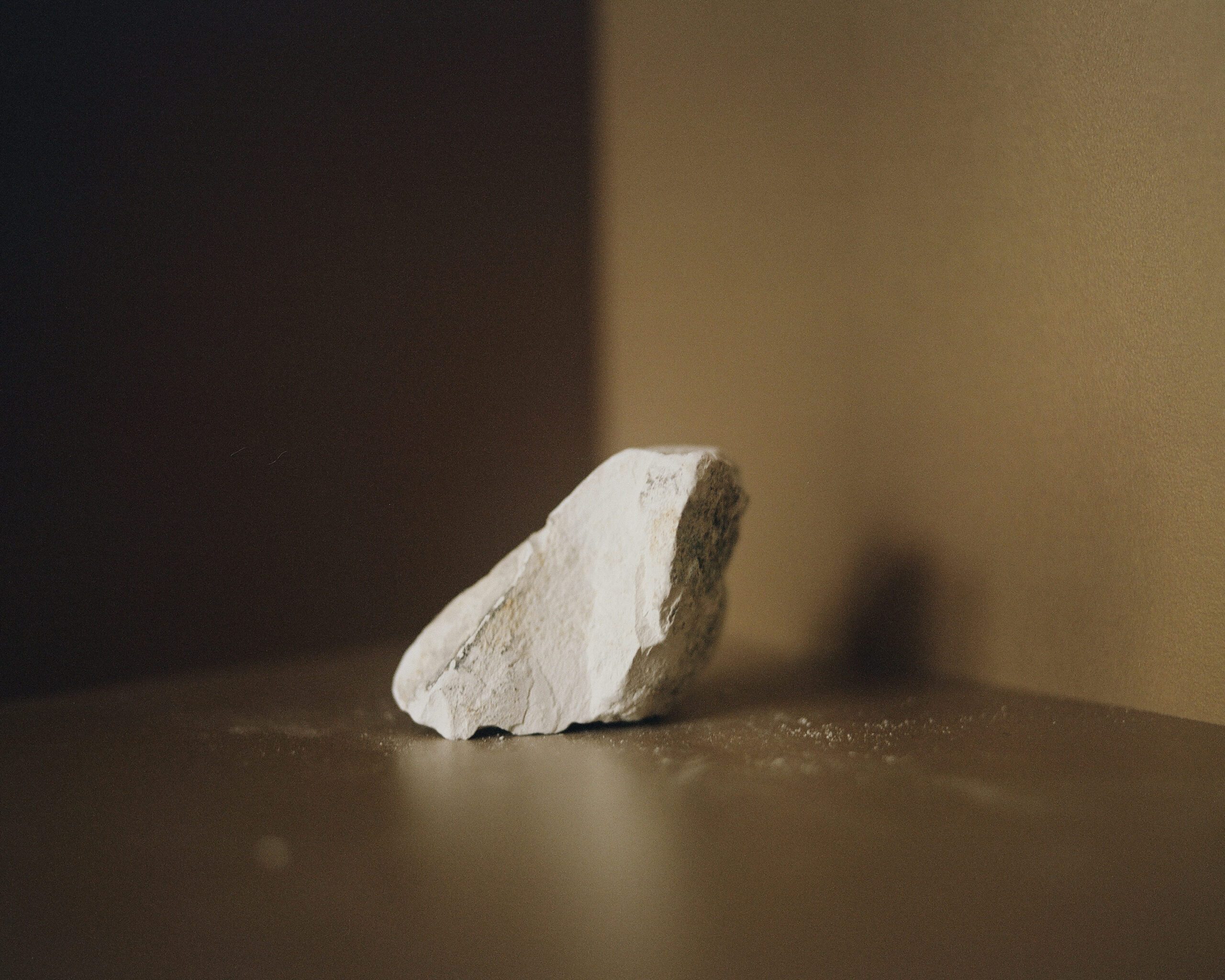A Labyrinth of Chalk
Dinosaurs and champagne. On the surface, not much in common; go deeper, and there’s chalk, the extensive limestone deposits underground in Champagne, formed some 60-80 million years ago when dinosaurs thrived on earth.
A five-mile labyrinth of chalk is underfoot, owned by the oldest champagne house Ruinart since 1877; its constant temperature, absence of vibrations and perfect humidity level make it perfect for wine storage, ageing, and preservation. Originally carved out in the Middle Ages, over time the walls and tunnels have served as quarries, abbeys, wheat silos, a refuge for counterfeiters avoiding taxes, even a makeshift office space during World War bombing. It is a UNESCO World Heritage Site.
Nerd-out on the chalk: Campanian chalk, to be precise. Called such as it was formed during the Campanian Age in the Late Cretaceous Period those many million years ago. The Campanian Age is named after the Champagne region, baptized by French geologist Henri Coquand.
The cathedral-like purity of Ruinart cellars’ chalk walls recalls the white Chardonnay grape variety for which Ruinart is renown.
While most champagnes blend three grape varieties, ‘Blanc de Blancs’ champagnes contains only one: Chardonnay grapes, which are grown on the mountainside vineyards called Côte des Blancs. Underground? Chalk. It absorbs a large amount of water as a reserve during drought, provides a constant source of irrigation for the vines, and stores and returns solar heat for the subsoil.
Champagne, France, is sometimes called a “vertical landscape” for its geological profile below, tied to the mercurial weather above, meeting in its horizontal topsoil, and a glass of it with some mineral notes on the nose.
________
Closed for renovation (it’s a constant affair), the Ruinart cellars are now open for visitation, reserve HERE.
Below, a map showing the chalk, les craies, in blue. Courtesy of Larmandier-Bernier Champagne another renowned and historic champagne house emblematic of the Côte des Blancs region.
